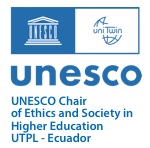«God is good» in The Interior Castle from Ricoeurian hermeneutics
Abstract
Taking as a basis Ricoeurian hermeneutics, a philosophical analysis of The Interior Castle by Teresa of Ávila is carried out in order to understand some utterances derived from the proposition «God is good». First, the problem of assuming a simple semantic-explanatory vision of this (partial) definition of God is explained. Afterwards, a pragmatic-comprehensive review of his goodness in the aforementioned book is carried out. Finally, the main conclusion points out that the perlocutionary dimension of the Teresian text can be a possible baroque anticipation: given our ignorance of divine reality, let us just be happy following Jesus' declaration of love.
Downloads
References
Austin, John Langshaw. (1962). Cómo hacer cosas con palabras. Barcelona: Paidós.
Beorlegui, Carlos. (2016). Antropología filosófica. Dimensiones de la realidad humana. Madrid: Universidad Pontificia de Comillas.
Bueno-Gómez, Noelia. (2018). «Self-management and Narrativity in Teresa of Avila’s work». Life Writing 15 (3): pp. 305-320. DOI: 10.1080/14484528.2018.1475001
Calsamiglia Blancafort, Elena y Tusón Valls, Amparo. (1999). Las cosas del decir. Manual de análisis del discurso. Barcelona: Ariel.
Dascal, Marcelo. (Ed.) (1999). Filosofía del lenguaje II. Pragmática. Madrid: Trotta.
Fernández Martín, Patricia (2020). «Conocimiento, poder y religión», Investigaciones Feministas, 11 (1): pp. 155-165. https://doi.org/10.5209/infe.65806
Fraijó, Manuel. (1998). A vueltas con la religión. Navarra: Verbo Divino.
Heidegger, Martin. (1967). Sein und Zeit. Tübingen: Max Niemeyer. [Trad. cast.: Ser y tiempo. Trad. Jorge Eduardo Rivera. Madrid: Trotta, 2003].
López Sáenz, Mª Carmen. (2009). «La filosofía hermenéutica del texto y su verdad. H-G. Gadamer y P. Ricoeur». En Estudios sobre el texto. Nuevos enfoques y propuestas, editado por Azucena Penas y Rosario González. Frankfurt am Main: Peter Lang, pp. 17-41.
López Sáenz, Mª. Carmen. (2016). Corrientes actuales de la Filosofía I. En-clave fenomenológica. Madrid: Dykinson/UNED.
Moreno Cabrera, Juan Carlos. (2003). Semántica y gramática. Sucesos, papeles semánticos y relaciones sintácticas. Madrid: Antonio Machado Libros.
Moreno Cabrera, Juan Carlos. (2013). Cuestiones clave de la Lingüística. Madrid: Síntesis.
Nystrand, Martin. (1986). The structure of written communication. Studies in Reciprocity between Writers and Readers. Londres: Academic Press.
Osuna García, Francisco. (2005). «¿Es posible una lingüística inmanente?». Language Design 7: pp. 51-84. http://elies.rediris.es/Language_Design/LD7/osuna_p51-84.pdf
Ricoeur, Pierre. (1986). Du Texte à l´action. Essais d´herméneutique II. Paris: Seuil. [Trad. cast.: Del Texto a la acción. Ensayos de hermenéutica II, México: FCE, 2002.]
Russell, Bertrand. (1905). «On Denoting». Mind. Texto de Logic and Knowledge, ed. Robert Marsh, 1956. Desde el 1 de octubre de 1995 en Bibliotheca Augustana. http://www.fh-augsburg.de/~harsch/anglica/Chronology/20thC/Russell/rus_intr.html
Tomasini Bassols, Alejandro. (1993). «El lenguaje religioso». En Religión, editado por José Gómez Caffarena. Madrid: Trotta, pp. 145-161.
Walton, Heather. (2004). «Women writing the divine». En Feminist Philosophy of Religion. Critical Readings, editado por Pamela Sue Anderson y Beverly Clack. Nueva York/Oxon: Routledge, pp. 123-135.
Weber, Alison. (1996). Teresa of Avila and the Rhetoric of Femininity. Princeton: Princeton University Press.
Copyright (c) 2021 ©️ Analysis

This work is licensed under a Creative Commons Attribution-NonCommercial-NoDerivatives 4.0 International License.








